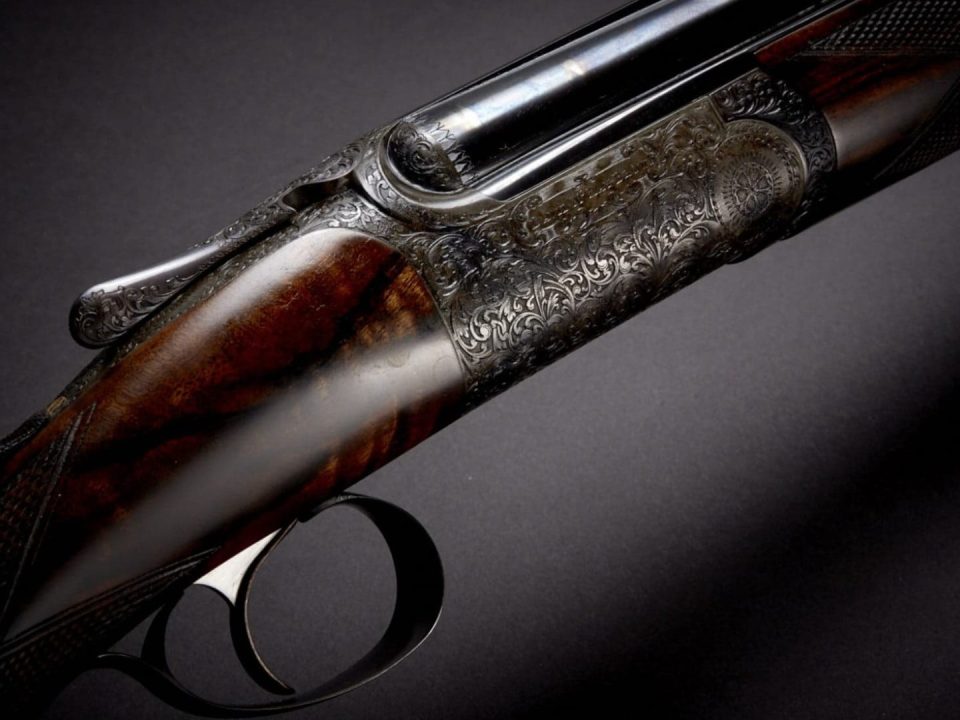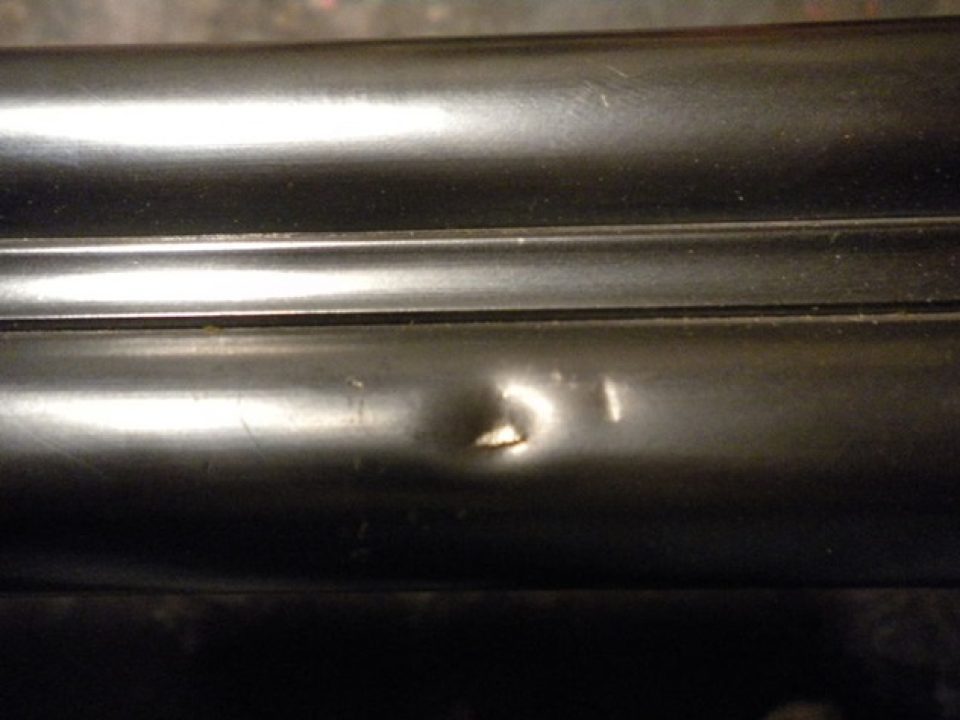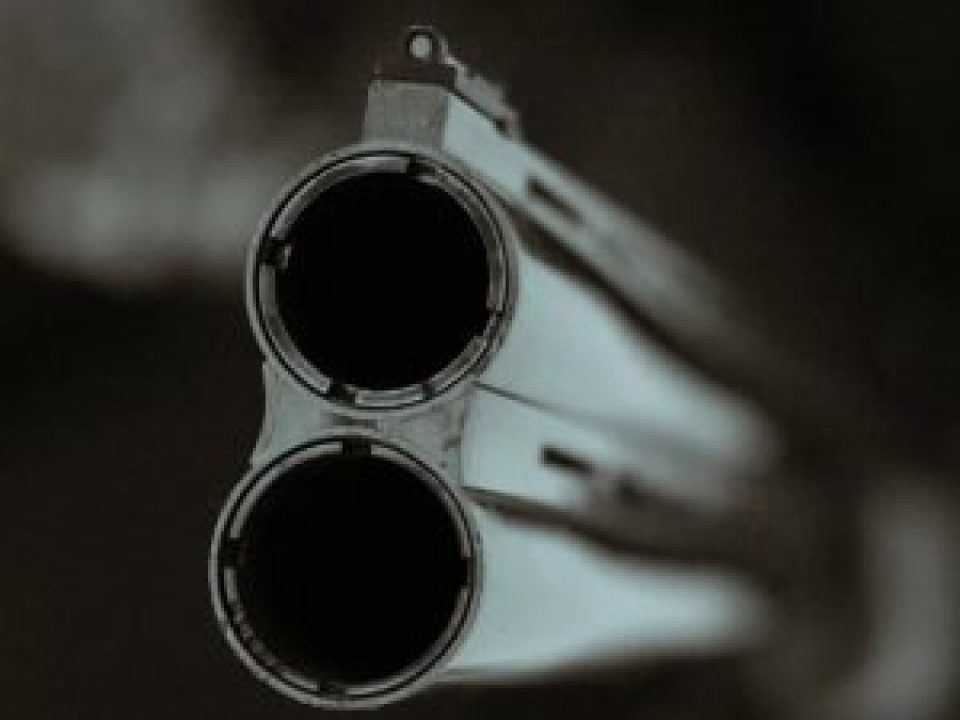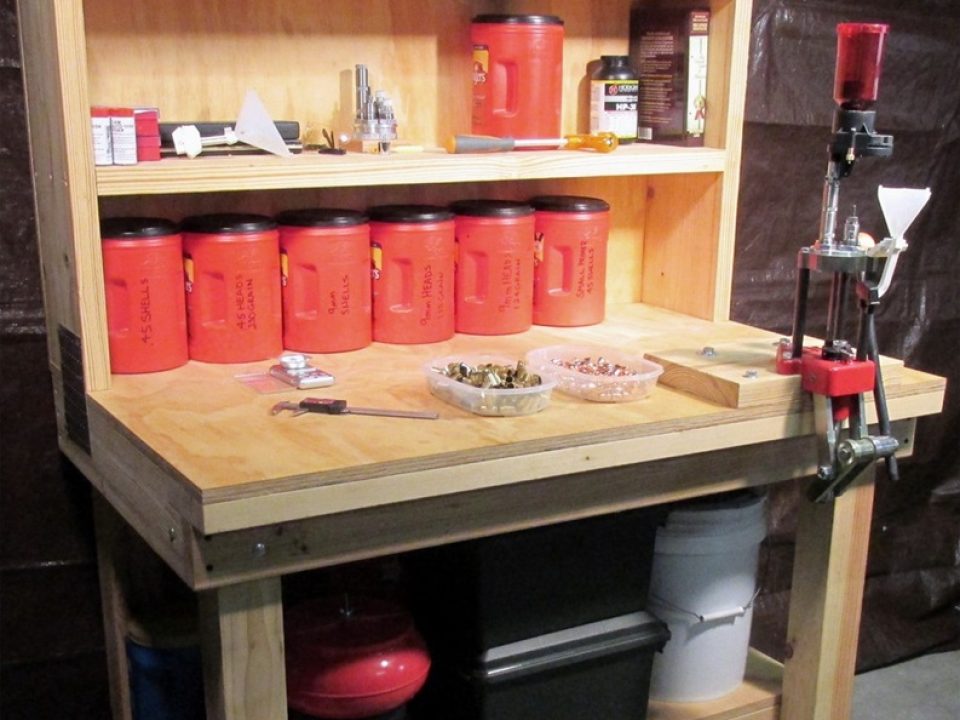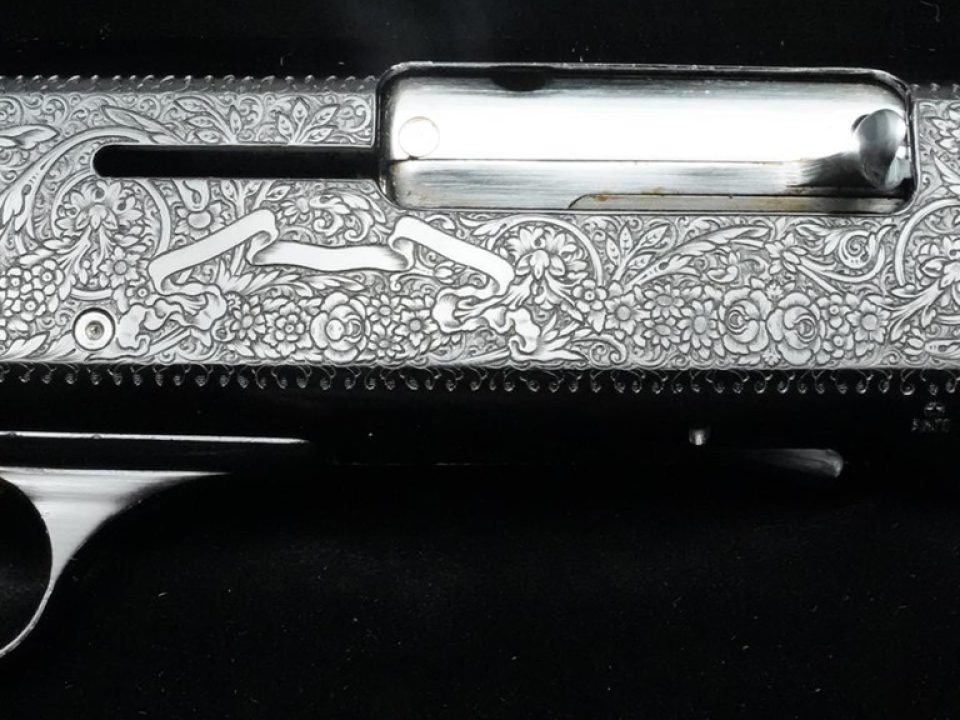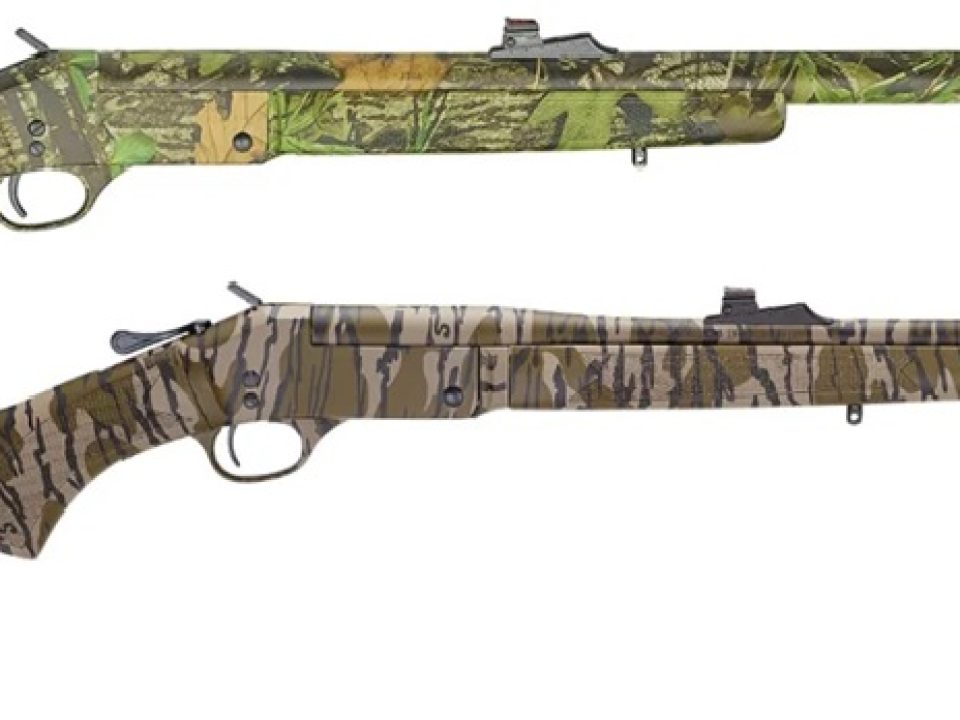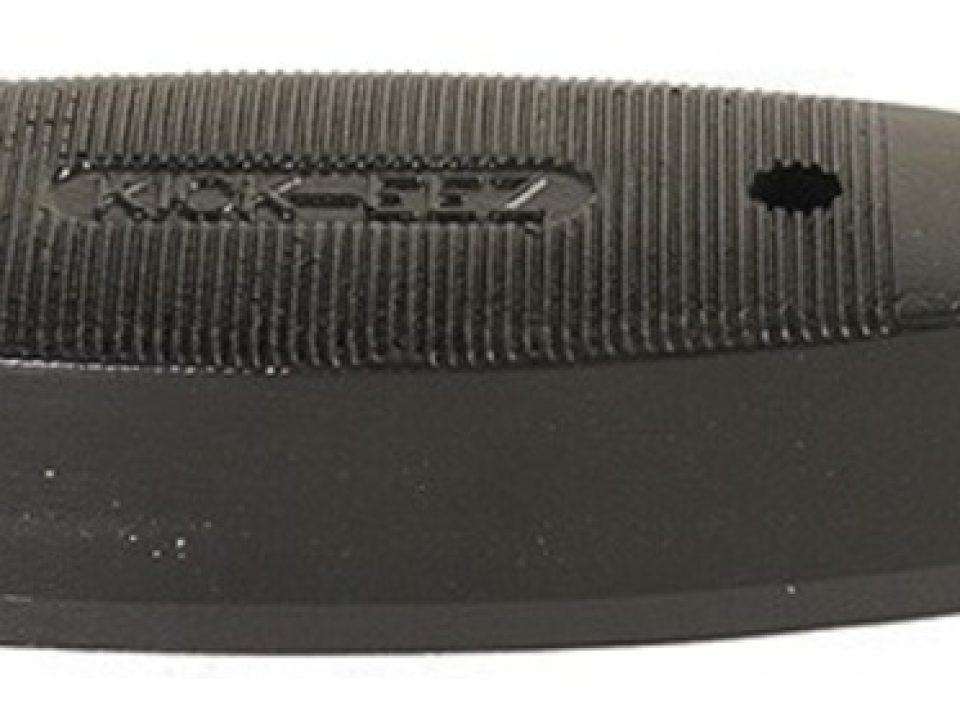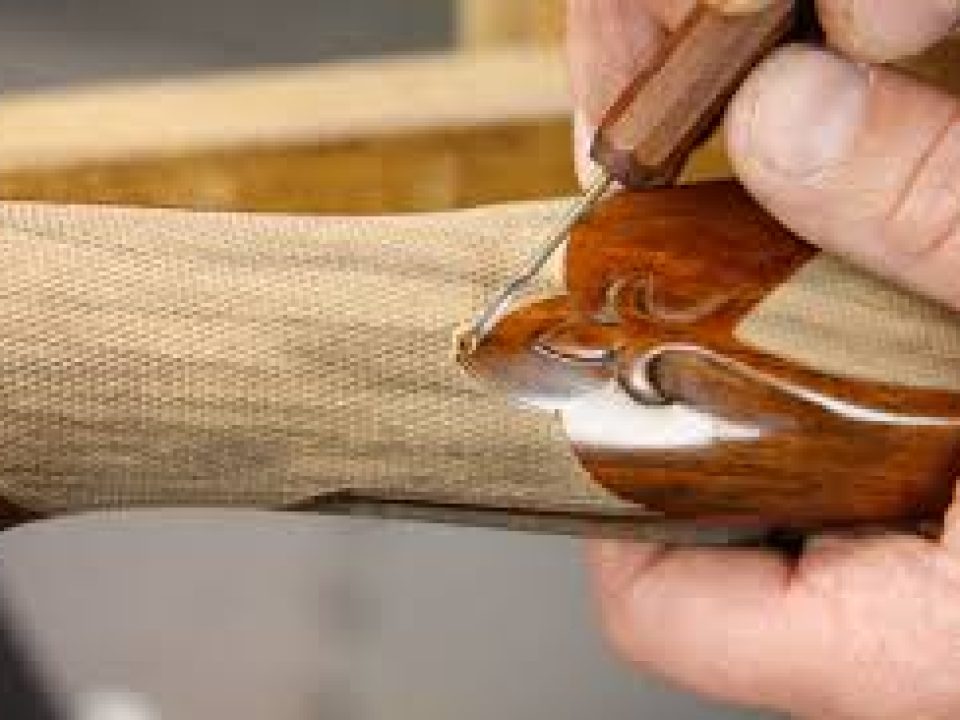The 10-gauge shotgun is best used for hunting large game, such as waterfowl and turkey, due to its power and range.
Briefs
A series of brief articles cataloging the sport and gear for wing and clays shooting.
Fausti, Beretta, Purdey, Holland & Holland, McKay Brown, Fabbri and Vintage Classics Debut at the New Sprawling Mallards Shooting Supply & Apparel Destination
Enter the luxurious fine gun room of the new Mallards Shooting Supply & Apparel and you’ll be amazed at the names of legendary shotguns resting in the red-velvet-lined cases: Fabbri, Purdey, Perazzi, Buchan, Holland & Holland, Beretta Premium along with vintage collectibles from LC Smith, Winchester and Parker Brothers (plus a selection of stunning Rigby rifles).
It’s Grand Opening Saturday night on November 15, 2025. The classical Julian & Sons built gun room, safeguarded by a massive vault door, is jammed with guests browsing and chatting. Among them are Grant Buchan and his wife Holly. Grant owns Scottish shotgun makers McKay Brown and Buchan Guns. The Buchans arrived from Scotland to help promote the new relationship between McKay Brown and Mallards. Grant explained that he had parted ways with fabled Griffin & Howe, his original East Coast agent, in favor of Mallards because he strongly believed that Mallards is the more visionary of a business partner in the marketing of best shotguns and their new joint program of organizing and promoting Scottish estate driven shoots to Mallard clients.
Beretta Launches the AX800 Suprema
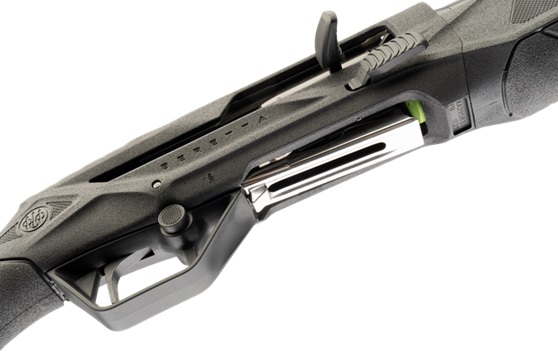
Beretta unveils the new AX800 Suprema, a ground-up engineered waterfowl shotgun that pushes the company’s performance, durability, and ergonomics into a new class. Built for serious hunters who demand maximum reliability in the blind, on the boat, and in the worst weather, the AX800 Suprema combines breakthrough gas-system technology, championship barrel engineering, and industry-leading recoil mitigation to deliver more effective shots, faster follow-ups, and less maintenance between hunts.
“The AX800 Suprema is the most advanced waterfowl shotgun we’ve ever built,” said Caleb McMillen, Beretta USA Sr. Product Manager for Long Guns. “Every part of this platform was designed and engineered to give waterfowl hunters an advantage: harder hitting and more consistent patterns, faster cycling, dramatically reduced felt recoil, cleaner operation, and a fit system that lets shooters fine-tune the gun to their body.”
Key innovations & features
- B-LINK® Pro Gas System – Our fastest, cleanest, most reliable gas system to date. B-LINK Pro cycles everything from light target loads to heavy magnums with ease, running 36% faster and 46% cleaner than prior Beretta gas systems (including the A400 Xtreme Plus). The result: softer felt recoil, more consistent cycling, and less time cleaning between hunts.
- Steelium® Pro Barrels – Barrel technology trusted by the world’s best clay shooters is now built for the blind. Proven in our world-champion DT11, the shotgun behind 14 out of 15 podium finishes at the 2024 Olympics, Steelium® Pro features an extended 17.7″ (450mm) forcing cone to deliver tighter, more consistent patterns, greater down range energy, and reliable performance, shot after shot.
- Kick-Off® Pro Recoil Reduction – Built to handle the heaviest waterfowl loads, the Kick-Off® Pro stock system cuts felt recoil by up to 70%.
- High-Tech Polymer Receiver – Rugged, weatherproof, and easy to clean. The sleek high-tech polymer receiver features a modular design and an integrated optic mount to keep you ready for any setup.
- Adjustable Fit System – Fully configurable to fit each shooter out of the box. Interchangeable pistol grip, adjustable comb, adjustable length of pull, cast/drop adjustments, and a weather-resistant recoil pad. Designed for intuitive handling in tight blind and boat environments; features a flat trigger with a crisp break and fast reset.
- User-First Ergonomics – Oversized loading port with pro-lifter, bolt handle, bolt release, and enlarged trigger guard for reliable operation in wet, cold, or gloved conditions.
Designed for real-world waterfowl hunting, the AX800 Suprema emphasizes both peak performance and field durability. The combination of B-LINK® Pro’s rapid, clean cycling, the Steelium® Pro barrel’s pattern control and recoil reduction means hunters can trust their first shot and their last, all season long. The AX800 Suprema will be available through authorized Beretta dealers in December, offered in a variety of finishes to match any environment or style. The release also complements Beretta’s recently launched Suprema Waterfowl Collection, a premium apparel line designed to keep hunters dry, warm, and concealed in even the toughest environments.
Stay connected with Beretta USA. Follow us on Facebook, Instagram, X, YouTube and LinkedIn for the latest news, products, and updates.
About Beretta
Established in 1526, Beretta is the world’s longest-standing industrial dynasty, with a legacy spanning 16 generations of continuous family ownership. For nearly 500 years, firearms bearing the Beretta name have been trusted and used around the world. Beretta USA Corp. was established in 1977 and quickly became the provider of the most widely deployed sidearm in the U.S. Armed Forces. Today, Beretta USA is part of Beretta Holding Group, which includes over 50 global subsidiaries and 20 renowned brands. Beretta manufactures, distributes, and markets a complete range of firearms, accessories, and apparel. The company also owns and operates six Beretta Gallery retail stores worldwide.
For more information, visit www.Beretta.com.
Repairing Your Shotgun Barrels With Restriking
Restriking is a process that involves reshaping the damaged portion of a shotgun barrel by using specialized tools and techniques. This method is commonly used to repair barrel bulges, dents, and other forms of damage that may affect the performance of the firearm. By carefully reshaping the affected area, gunsmiths can ensure that the barrel retains its structural integrity and functionality.
One of the key benefits of restriking is that it can help extend the lifespan of your shotgun barrels. Rather than having to replace the entire barrel, which can be costly and time-consuming, restriking allows you to repair the damage and continue using your firearm. This makes it a cost-effective solution for shotgun owners who want to keep their firearms in top condition without breaking the bank.
What is the Regulation of Shotgun Barrels?
In the context of double-barreled shotguns (side-by-side or over/under), “regulation” refers to how the two barrels are aligned so that they both shoot to the same point of impact (POI) at a specific distance.
What “Regulation” Means
Shotgun barrels are not perfectly parallel. Because each barrel is offset from the bore centerline, a gunsmith must adjust their angles during construction so that:
Both barrels’ patterns overlap at a chosen distance (usually 40 yards for field guns, sometimes 21–30 yards for skeet).
Vertical alignment (over/under barrels) is correct.
Horizontal alignment (side-by-side barrels) is correct.
This ensures that when you fire either barrel, the pattern hits where you’re aiming.
Safety Precautions for Reloading Shotgun Shells
Reloading shotgun shells can be a rewarding and cost-effective way to enjoy shooting sports. However, it is essential to prioritize safety when engaging in this activity. By following proper safety precautions, reloaders can reduce the risk of accidents and ensure that their reloading process is smooth and efficient.
Importance of Safety Precautions
Safety precautions are crucial when reloading shotgun shells to prevent accidents and injuries. Failure to follow proper safety measures can result in catastrophic consequences, including personal injury or damage to equipment. By incorporating safety protocols into their reloading routine, shooters can minimize the risks associated with the process and maintain a safe environment for themselves and others.
The Overlooked Franchi 48AL Semi-Auto
Early vintage Franchi shotguns, particularly the Franchi 48AL, are renowned for being lightweight, reliable long-recoil operated semi-automatic shotguns. These models are known for their excellent handling, making them popular for hunting, and early versions had steel receivers before the lighter aluminum receiver of later models was introduced. Other notable early models include the Franchi 48AL which features a 3-inch magnum chamber and steel receiver, and was likely produced in the late 1960s and 1970s.
The Henry Contemporary Lever-Action Shotgun
The Henry Lever-Action Shotgun is a classic firearm known for its reliability, accuracy, and smooth operation. With its iconic lever-action mechanism, the Henry Shotgun has become a favorite among hunters, sportsmen, and shooting enthusiasts.
It is known for its quick and smooth lever-action mechanism, which allows for rapid and efficient cycling of rounds. The Henry Shotgun is available in various models and calibers, allowing shooters to choose the one that best suits their needs and preferences.
What is a Sorborthane Recoil Pad?
The Sorborthane Recoil Pad is a revolutionary product designed to absorb and dissipate the energy created by recoil when firing a weapon. Made from a unique material called Sorbothane, a synthetic polymer with unparalleled shock absorption capabilities, these pads are able to reduce recoil impact by up to 90%. This means less strain on your shoulder and body, allowing you to focus on your shooting accuracy and enjoyment.
Sorborthane is viscoelastic polymer that behaves both like a liquid (absorbs and dissipates energy) and a solid (retains its shape). Developed in the 1980s, it’s used in everything from athletic shoe insoles to vibration mounts in aerospace and audio equipment. Unlike rubber or foam, Sorbothane doesn’t rebound quickly; it converts kinetic energy (recoil) into heat, reducing the felt impact on the shooter’s shoulder.
How to Identify the Difference Between Laser and Hand Checkering on Your Shotgun
When it comes to checkering on shotguns, there are two main techniques that are commonly used – laser checkering and hand checkering. While both methods serve the purpose of providing grip and aesthetics to the shotgun, there are distinct differences between the two.
Understanding the Telltale Signs of Laser Checkering
Laser checkering is a modern technique that involves the use of a laser to create precise and uniform patterns on the surface of the shotgun. One of the key characteristics of laser checkering is the consistency of the pattern across the entire surface. The lines are typically sharp, clean, and evenly spaced. Additionally, laser checkering often has a more shallow depth compared to hand checkering, giving it a smoother feel to the touch.
Shotgun Life Newsletters
Join an elite group of readers who receive their FREE e-letter every week from Shotgun Life. These readers gain a competitive advantage from the valuable advice delivered directly to their inbox. You'll discover ways to improve your shooting, learn about the best new products and how to easily maintain your shotgun so it's always reliable. If you strive to be a better shooter, then our FREE e-letters are for you.
About Shotgun Life
Shotgun Life is the first online magazine devoted to the great people who participate in the shotgun sports.
Our goal is to provide you with the best coverage in wing and clays shooting. That includes places to shoot, ways to improve your shooting and the latest new products. Everything you need to know about the shotgun sports is a mouse-click away.
Contact
Irwin Greenstein
Publisher
Shotgun Life
PO Box 6423
Thomasville, GA 31758
Phone: 229-236-1632

